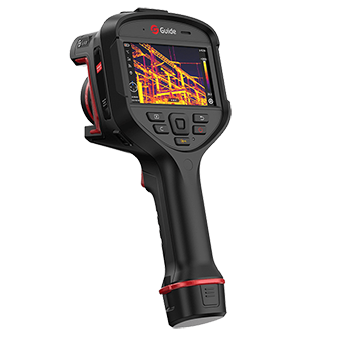Infrared Thermal Imaging Camera: Advanced Technology for Temperature Detection

# Infrared Thermal Imaging Camera: Advanced Technology for Temperature Detection
## Introduction to Infrared Thermal Imaging
Infrared thermal imaging cameras have revolutionized the way we detect and measure temperature in various applications. These advanced devices capture infrared radiation emitted by objects and convert it into visible images, allowing users to visualize temperature differences with remarkable precision.
## How Infrared Thermal Cameras Work
### The Science Behind Thermal Imaging
All objects with a temperature above absolute zero emit infrared radiation. Infrared thermal cameras detect this radiation through specialized sensors called microbolometers. These sensors measure the infrared energy and convert it into electrical signals, which are then processed to create a thermal image.
### Key Components of a Thermal Camera
- Infrared lens
- Detector array (microbolometer)
- Signal processing electronics
- Display unit
## Applications of Infrared Thermal Imaging
### Industrial Maintenance
Thermal cameras are extensively used in predictive maintenance programs to identify overheating components in electrical systems, mechanical equipment, and industrial processes before failures occur.
### Building Inspection
Energy Efficiency Assessment
Building inspectors use thermal imaging to detect heat loss, moisture intrusion, and insulation defects, helping improve energy efficiency in residential and commercial structures.
### Medical Diagnostics
In the medical field, thermal imaging assists in detecting inflammation, circulatory problems, and certain types of cancer by visualizing temperature variations in human tissue.
## Advantages of Thermal Imaging Technology
- Non-contact temperature measurement
- Ability to scan large areas quickly
- Works in complete darkness
- Can detect invisible problems
- Provides real-time results
## Choosing the Right Thermal Imaging Camera
### Factors to Consider
When selecting an infrared thermal imaging camera, consider:
- Temperature range
- Resolution (both thermal and visual)
- Field of view
- Emissivity settings
- Software capabilities
## Future Developments in Thermal Imaging
The future of infrared thermal imaging technology includes higher resolution sensors, improved image processing algorithms, and integration with artificial intelligence for automated analysis. These advancements will expand applications in security, autonomous vehicles, and smart home systems.
## Conclusion
Infrared thermal imaging cameras represent a powerful tool for temperature detection across numerous industries. As technology continues to advance, these devices will become even more accessible and capable, opening new possibilities for thermal analysis and problem detection.
Keyword: infrared thermal imaging camera